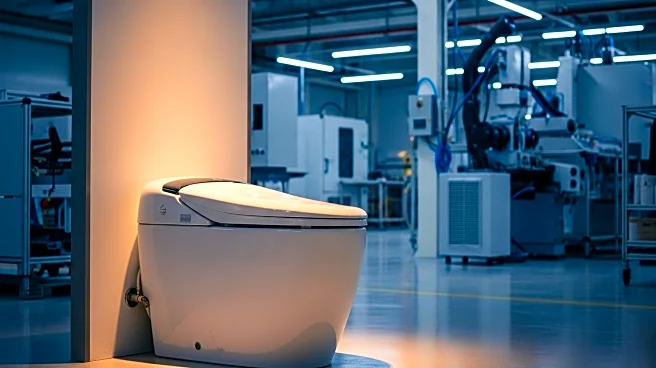What's Happening?
Toto, a leading plumbing manufacturer, has inaugurated a $224 million manufacturing facility in Morrow, Georgia. This new facility is part of Toto's strategy to expand its operations in the Americas, increasing its production capacity by 150 percent. The facility will produce high-end one-piece toilets, previously sourced from Asia, to meet growing demand in the Americas. The expansion includes advanced manufacturing technologies such as robotics and automated guided vehicles, enhancing production efficiency and sustainability. The facility is expected to begin operations in fall 2025, adding significant capacity to Toto's existing plants in Lakewood and Mexico.
Why It's Important?
The opening of this facility marks a significant investment in the U.S. manufacturing sector, particularly in the plumbing industry. By localizing production, Toto aims to reduce lead times and strengthen its supply chain resilience. This move supports the company's sustainability goals and aligns with broader industry trends towards regional manufacturing. The facility will create 420 local jobs, contributing to economic growth in Georgia. Toto's investment reflects confidence in the U.S. market despite challenges in the housing sector, underscoring the demand for premium bathroom products.
What's Next?
Production at the new facility is set to begin in fall 2025, with plans to install new kilns by 2027 to further enhance energy efficiency. Toto will continue to focus on expanding its market presence in the Americas, leveraging its increased production capacity to meet consumer demand. The company is likely to explore further innovations in manufacturing technology to maintain its competitive edge and sustainability leadership.
Beyond the Headlines
Toto's investment in advanced manufacturing technologies highlights the growing importance of automation in the industry. The facility's focus on sustainability reflects a broader shift towards environmentally responsible manufacturing practices. This development may influence other companies to adopt similar strategies, potentially leading to increased regional production and reduced reliance on overseas manufacturing.













